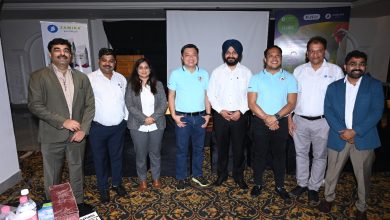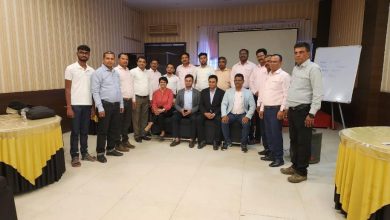From Farm to Fork – getting food where it needs to go is critical, according to new EIU report
New Delhi:
On a global scale, 1 billion people around the world suffer from hunger. Global food statistics tell us there is enough food produced in a year to feed each person 2,700 calories and 75 grams of protein a day. However, as per the latest EIU report, right now, food isn’t efficiently reaching those who need it.
In a white paper published by The Economist Intelligence Unit, titled From Farm to Fork commissioned by Cargill, it was found that Asia currently accounts for 19% of the total global food and agriculture exports, and 31% of the total food and agriculture imports. It’s also a major producer of key agriculture crops: the region produces 90% of the world’s rice, while Malaysia and Indonesia produce 85% of the world’s palm oil. China is the world’s largest importer of soybean (importing 60% of the world’s soybean for feed, driven by a surge in meat consumption), and India is the world’s largest consumer and importer of pulses.
This is where the importance of the food supply chain comes in – ensuring where food needs to go plays a key factor towards ensuring food security for a booming population. Within the food supply chain, there are six megatrends that affect its viability including urbanisation, ageing rural populations, resource scarcity, supply chain integration, modern retail, and food loss and food waste.
Urbanisation – population growth and rapid rural-urban migration leads to an increase in demand for more and greater diversity of food, and domestic food supply chains can’t keep up.
a. Food consumption is forecast to more than double on a per-capita basis between 2007 and 2030 in China and South Asia. During the same period, however, food self-sufficiency is forecast to fall considerably in China and South Asia, partly due to rapid increases in city density and declines in agricultural employment.
b. More diverse diets are more resource-intensive, especially when meat is included. Meat accounts for 17% of global calorie intake, but uses twice the amount of land, water and feed.
c. FAO projects that most of the increase in demand for animal protein will come from developing Asia by 2030 and beyond.
Ageing Rural Population – Fewer Asian farmers, and those who do still farm are likely to be older, which affects domestic supply.
a. Globally, the average age of farmers has risen to 60 – Philippines is at 57, while Japan is 70. At the same time, 75% of individuals over 60 in Asia report that agriculture is their main source of income.
b. As a result, domestic food supplies will become more expensive or simply become insufficient.
c. Older farms find it more challenging to access credit, upskilling initiatives and other income-supporting resources.
d. Innovation tends to bypass older farms as well, who lack financial means to invest or the skills to facilitate its adoption.
Resource Scarcity – Domestic production will be affected mainly by resource scarcity and sustainability concerns. This will be made worse in the long-run by climate change.
a. Food and Agriculture Organisation (FAO) of the United Nations estimates that 40% of land in ASEAN countries will continue to face severe degradation.
b. Competition of water will also increase due to urbanization, and 40% of Asia will face severe water shortages by 2030. This will all be made worse by climate change
c. More than 50% of cultivated land in China has already degraded, and India faces an estimated loss of 5 billion tonnes of soil every year through erosion.
d. Salt degradation, which affects soil properties and reduces crop productivity, has also affected major areas such as the Yellow River Basin, the Indo-Gangetic Basin and the Indus Basin.
e. Currently agriculture is the main user of fresh water, but by 2030 Asia will need 65% more water for industrial use, and 30% more for domestic use.
Supply Chain Integration – Supply chain integration already faces challenges for smallholders. Geopolitical shifts will make regional integration difficult at the cost of global integration.
a. Being able to integrate various stages of the supply chain means an increase in ability to trace and track food quality.
b. Smallholders can work with large firms, but will struggle to meet quality standards demanded by consumers and large agri-business firms.
c. Modern retail (including vertical integration) means supermarkets want high quality food in large volumes. We could end up with shorter, more regional supply chains.
Modern Retail – Modern & online retail to become prevalent with focus on food safety /sustainability.
a. The average Asian consumer has more money and more evolved food preferences, so supermarkets have to meet changing requirements and deliver safe, high quality food products at competitive prices.
b. E-commerce could re-design the food chain by lengthening them physically but shortening the number of players within the chain.
c. National Bureau of Statistics reports that Chinese online sales grew by one-third in 2015, reaching a value of RMB3.88trillion.
d. 37% of all Asian consumers already shop online and another 53% are willing to do so.
Food Loss and Food Waste – Food loss will transition to food waste, but an awareness could lead to data-driven solutions.
a. Food loss generally occurs when there is inadequate technology, weak infrastructure support, technical skills deficiency or knowledge gaps, and also poor logistical support.
b. Investment in infrastructure and economic development is likely to lead to a slow but gradual shift from food loss to food waste.
c. Food loss tends to happen during harvest time and post-harvest, but high-income Asian countries are more likely to show patterns of food loss (Japan, South Korea and China) during consumption stage.
d. About 670m tonnes of food are lost or wasted every year in high-income countries, and about 630m tonnes are lost or wasted in low- and middle-income countries.
e. Tackling food loss requires investment in infrastructure such as warehouses, improved transport links, and the extension of R&D work to farmers.
f. Food loss and food waste are yet to be systemic issues, but an increased awareness has been building and research encouraged in the area and efforts to find technological solutions.
Asia will be home to 4.9bn people by 2030, including nearly half of the world’s urban population. While factors in producing food isn’t the biggest problem, it is the difficulty in distribution i.e. food getting where it’s supposed to be, that needs urgent attention. Non-tariff measures are high, particularly in agriculture sector and trading produce has become more challenging. The unique nature of agricultural products amplifies delays. Coupled with poor infrastructure, these come together to make it difficult to transport and store food – so driving costs up and increasing chances of food loss and food waste.




